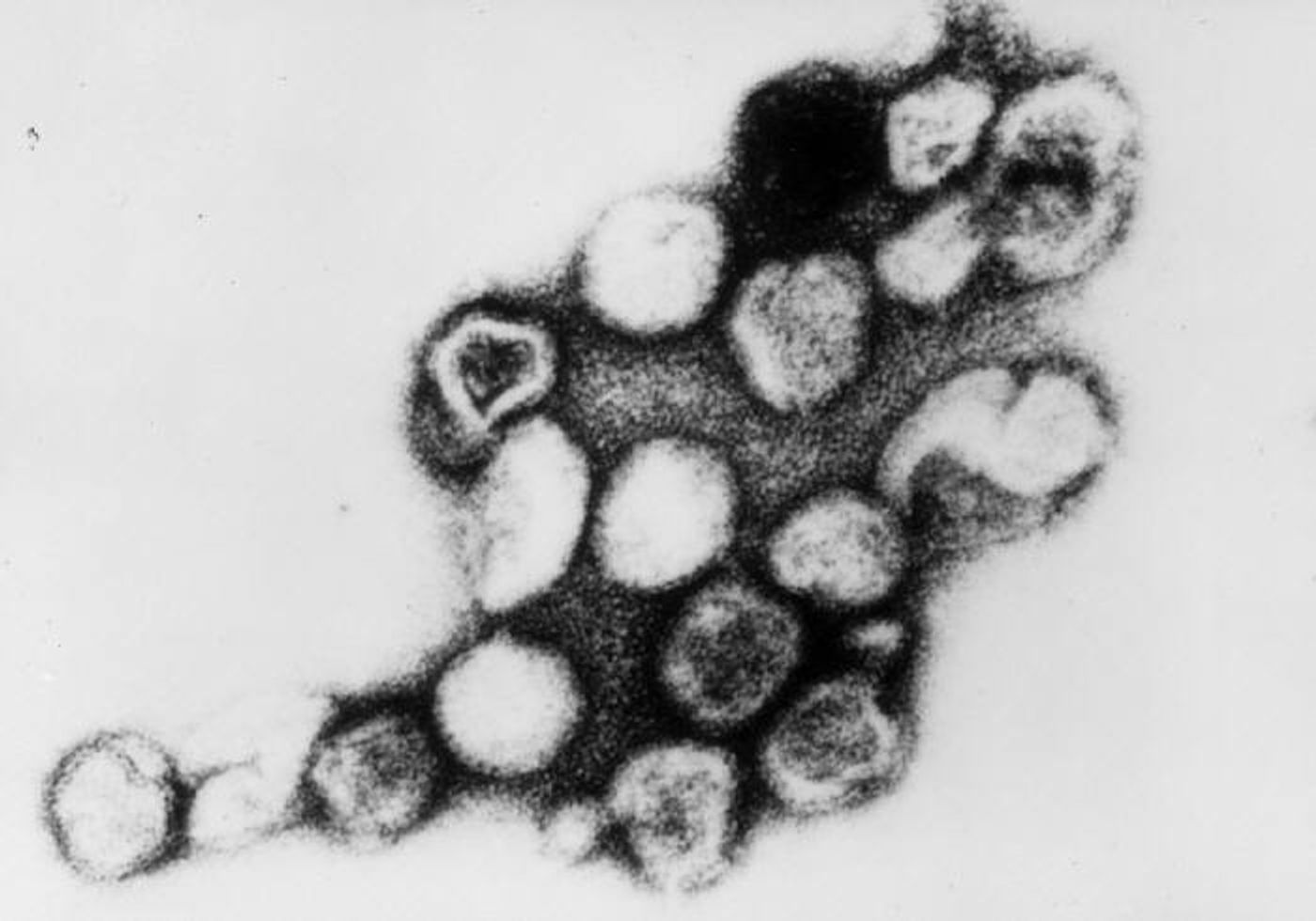Two Early Relatives of Rubella Are Discovered
Rubella is a contagious viral infection that can lead to rash, fever, and sore throat. While usually mild, it can be dangerous for pregnant women and their babies. It’s preventable with a vaccine that is estimated to reduce the risk of contracting the disease by 97 percent.
For many years, the virus that causes rubella, Rubivirus, was the only member of its family: Matonaviridae. But two groups that were once working separately have now reported collaboratively in Nature that they have found two other relatives of Rubivirus. One team was working in the field in Uganda, taking nose swabs from bats, on the hunt for coronaviruses that bats carry. The other was examining specimens of a capybara, a donkey, and a Bennett's tree-kangaroo to learn more about what had caused each of them to die from severe brain swelling.
The team in Uganda named the virus they isolated ruhugu virus, combining the location where it was found: Ruteete Subcounty, with a word from a local language, Tooro, for flapping bat wings in a tree’s hollow: obuhuguhugu. The virus identified in Germany is a bit different from both rubella and ruhugu and was called rustrela, after Strela Sound, which is near where it was found. The German team also found it in wild mice near the zoo.
There is no indication that either of these newly-discovered viruses can infect people, the researchers stressed. Instead, the work can show us that some similar virus was able to jump from animal to humans and become what we know of as the rubella-causing virus; it shows that we must remain vigilant.
"There is no evidence that ruhugu virus or rustrela virus can infect people, yet if they could, it might be so consequential that we should consider the possibility," said senior study author and epidemiologist Tony Goldberg of the University of Wisconsin, Madison. "We know that in Germany, rustrela virus jumped among species that are not at all closely related. If either of these viruses turns out to be zoonotic, or if rubella virus can go back into animals, that would be a game-changer for rubella eradication.”
Rubella still causes birth defects in about 10,000 children a year, and Rubivirus is airborne.
People have tried to find relatives of Rubivirus before, but rubella genomes have been challenging to work with, noted Goldberg.
"Why has it been so challenging to track down the origins or relatives of rubella virus?" Goldberg asked. "Why did it take 206 years from the time George Maton first described rubella, and why did two teams working independently figure it out within three months of each other, get lucky enough to learn of one another's results, and then lucky enough to work together to publish?"
It may be technological advancement, but it may also just be luck. If we want to keep luck on our side, it will be important to limit human encroachment into wildlife habitats and maintain compliance with the vaccine effort.
Sources: AAAS/Eurekalert! via University of Madison - Wisconsin, Nature









